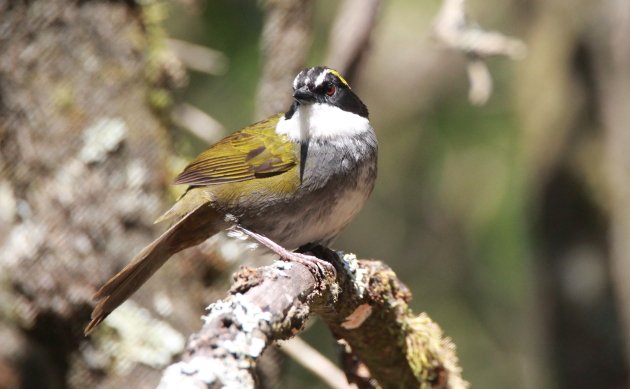
I haven’t done much birding during the past few decades in my native United States. But I suspect that it is very difficult there to find a prime site that someone else hasn’t already discovered. In my adoptive country of Mexico, however, site discovery is not only possible, but necessary. In my case, fully half of the eBird hotspots within an hour of my city of Morelia that have more than 100 species registered were my discoveries, and I had a hand in increasing the species list for almost my nearby sites.
El Temascal (or “Temazcal”, depending on the map used; the name refers to an indigenous sweat lodge) used to be just the road junction where I either continued east to climb to the cool coniferous forest of Cerro de Garnica, or turned south to drop into the dry tropical thorn forest of Paso Ancho. But I have learned to make brief stops at any sites that show promise. And as it turned out, El Temascal did not just promise, it delivered.
My exploratory visit to the site, in April of last year, yielded 42 species, including a good number of migratory species and some endemic favorites, such as the Red-headed, Hepatic, and Flame-colored Tanagers, Greenish Elaenia, Tufted Flycatchers, Orange-billed Nightingale-Thrushes, and lots of Blue Mockingbirds. But two species really stood out. First, there were three Rose-breasted Grosbeaks, far away from their supposed coastal Mexican wintering range. The second species, the Squirrel Cuckoo, suggested what has turned out to be the signature characteristic of this site: the presence of lowland species, at a site that sits at 2,250 meters (7,400 feet) above sea level.
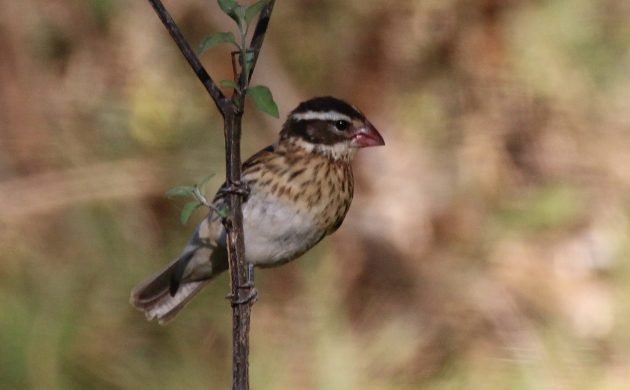 My first Rose-breasted Grosbeak. A male was also present.
My first Rose-breasted Grosbeak. A male was also present.
On my second visit, in September, I was surprised to see a Great Blue Heron standing beside a marshy spot, and delighted to see some Hooded Grosbeaks hanging out on a paved parking area. El Temascal’s endemics list grew to include the White-eared Hummingbird, Transvolcanic Jay, Gray-barred Wrens, Rufous-capped Brushfinches, Crescent-chested, Rufous-crowned, and Golden-browed Warblers, Cinnamon-bellied Flowerpiercer, and, wonder of wonders, a Colima Warbler!
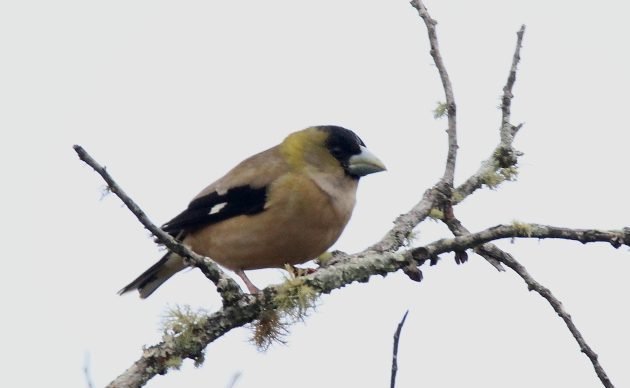 Not the one from El Temascal, but this was a Hooded Grosbeak from nearby.
Not the one from El Temascal, but this was a Hooded Grosbeak from nearby.
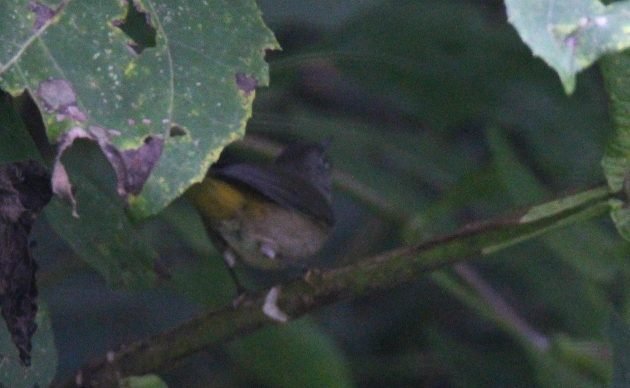 I swear, that’s a Colima Warbler in there.
I swear, that’s a Colima Warbler in there.
By my third visit, in March of this year, there weren’t as many new species to be seen. But the Rose-breasted Grosbeaks were there again, suggesting an official range extension. And I was astonished to see my first Ocellated Thrasher, with the first sighting of this little-known species in my state!
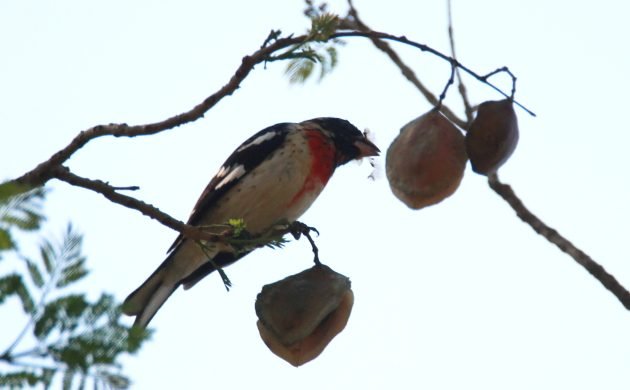 “Will leave official range for Jacaranda seeds.”
“Will leave official range for Jacaranda seeds.”
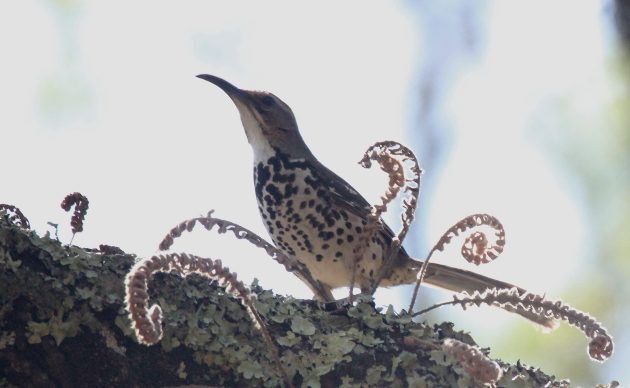 I’ve shown this photo once, and I’ll show it again: the Ocellated Thrasher.
I’ve shown this photo once, and I’ll show it again: the Ocellated Thrasher.
A very brief midday visit in April, on the way back from the lowlands with a biologist friend, yielded one wonderful new highland species: the Bumblebee Hummingbird. Too bad the photos were poor.
But it was a change of tactics in May that yielded the most interesting results. I started out the day by walking along a path that climbs the steep mountainside behind El Temascal, and the highland-meets-lowland naturer of this site came to the forefront. (You can see the start of this path on the lower-left of the final photo for this post.) Among the highland species were the Mountain Trogon, Hairy Woodpecker, Gray-barred Wrens, Transvolcanic Jays, Chestnut-sided Shrike-Vireo, Aztec Thrushes (!), Black-headed Siskins, and one of my favorites, the Green-striped Brushfinch. But there were plenty of lowland birds as well: the West Mexican Chachalaca, Short-tailed Hawk, Golden Vireo, Happy Wren, Rufous-backed Robin, and (lifer!!!) Slaty Vireo. (Note to reader: it is impossible to come back unhappy from an outing where you have seen a Happy Wren.)
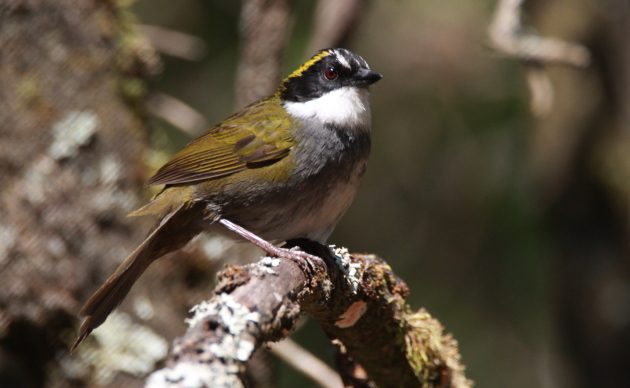 Good pictures of the Green-striped Brushfinch, after five years of trying.
Good pictures of the Green-striped Brushfinch, after five years of trying.
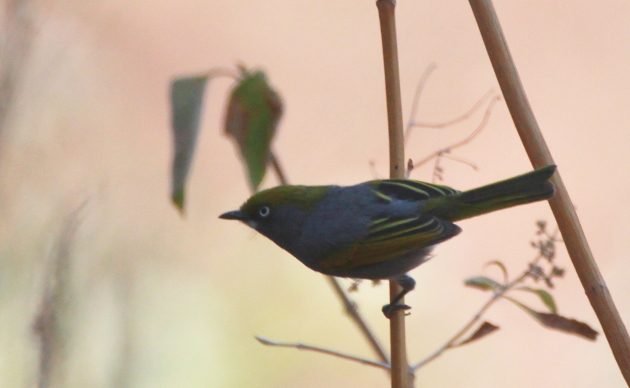 Not the best picture of a Slaty Vireo. But what a cool bird!
Not the best picture of a Slaty Vireo. But what a cool bird!
In preparation for publishing this post, I went back to El Temascal last week. It is now July, the height of our rainy season. None of the above lowland species were present, which suggests that they are all altitudinal migrants, seeking out cooler and moister climes in the hot months just before our monsoon rains kick in.
The good news is that it will probably take several more visits to prove this theory!
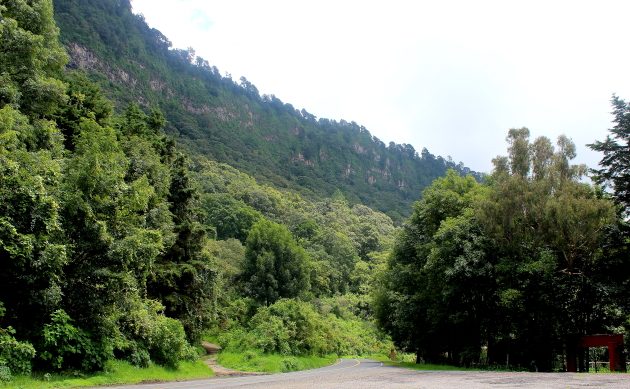











Some amazing finds! and great photos!